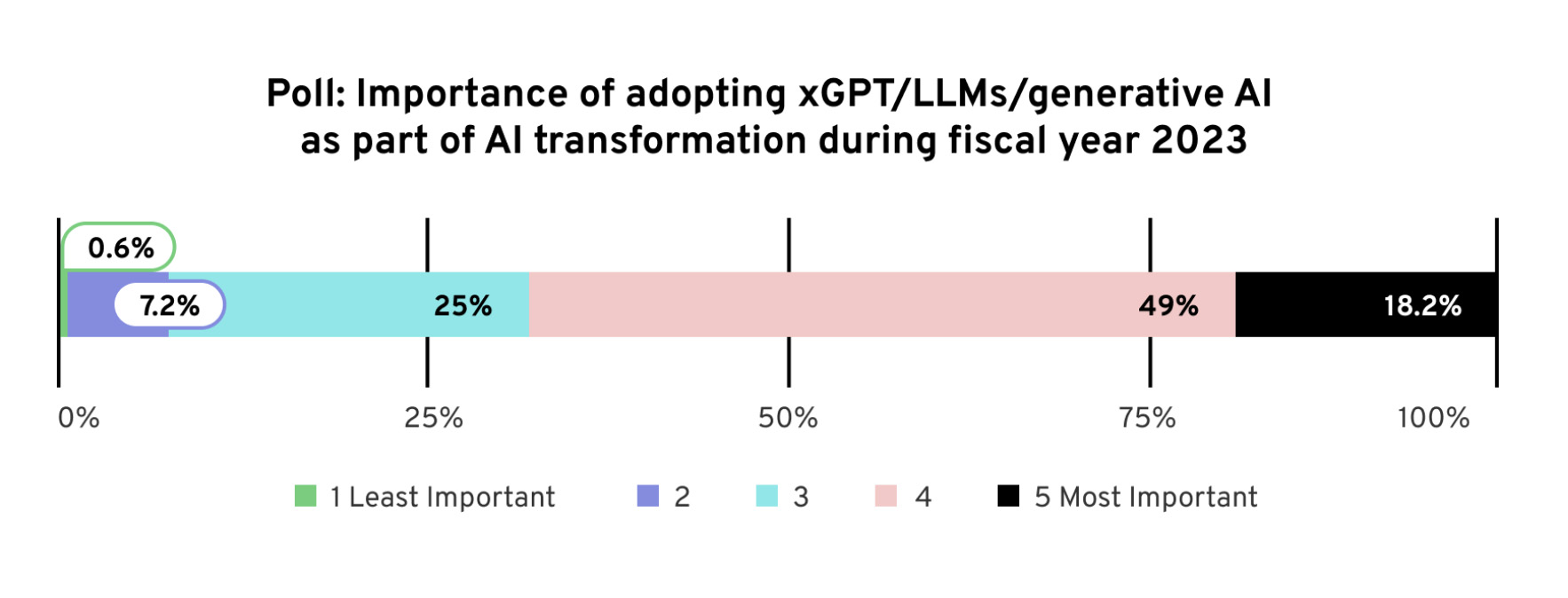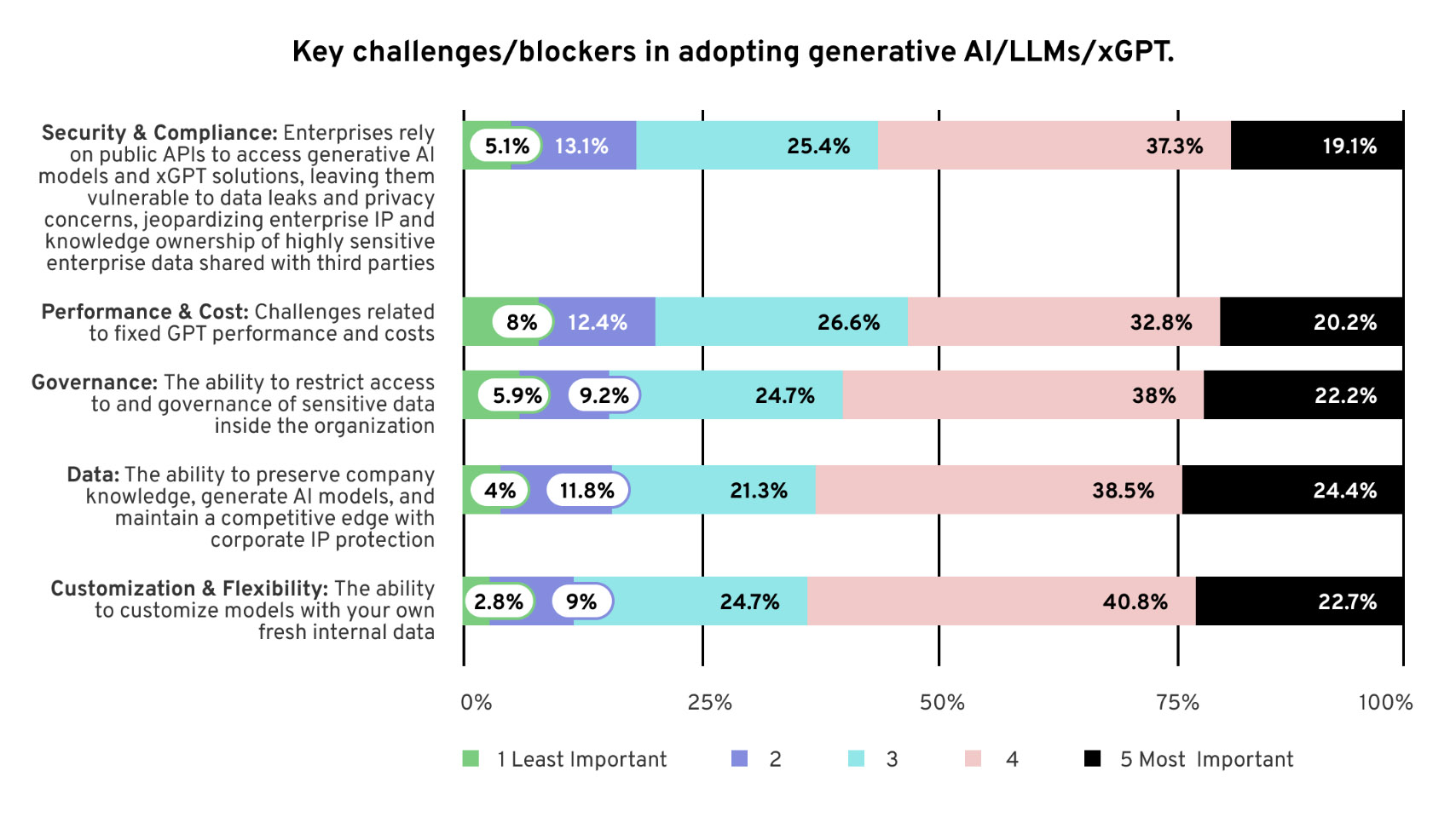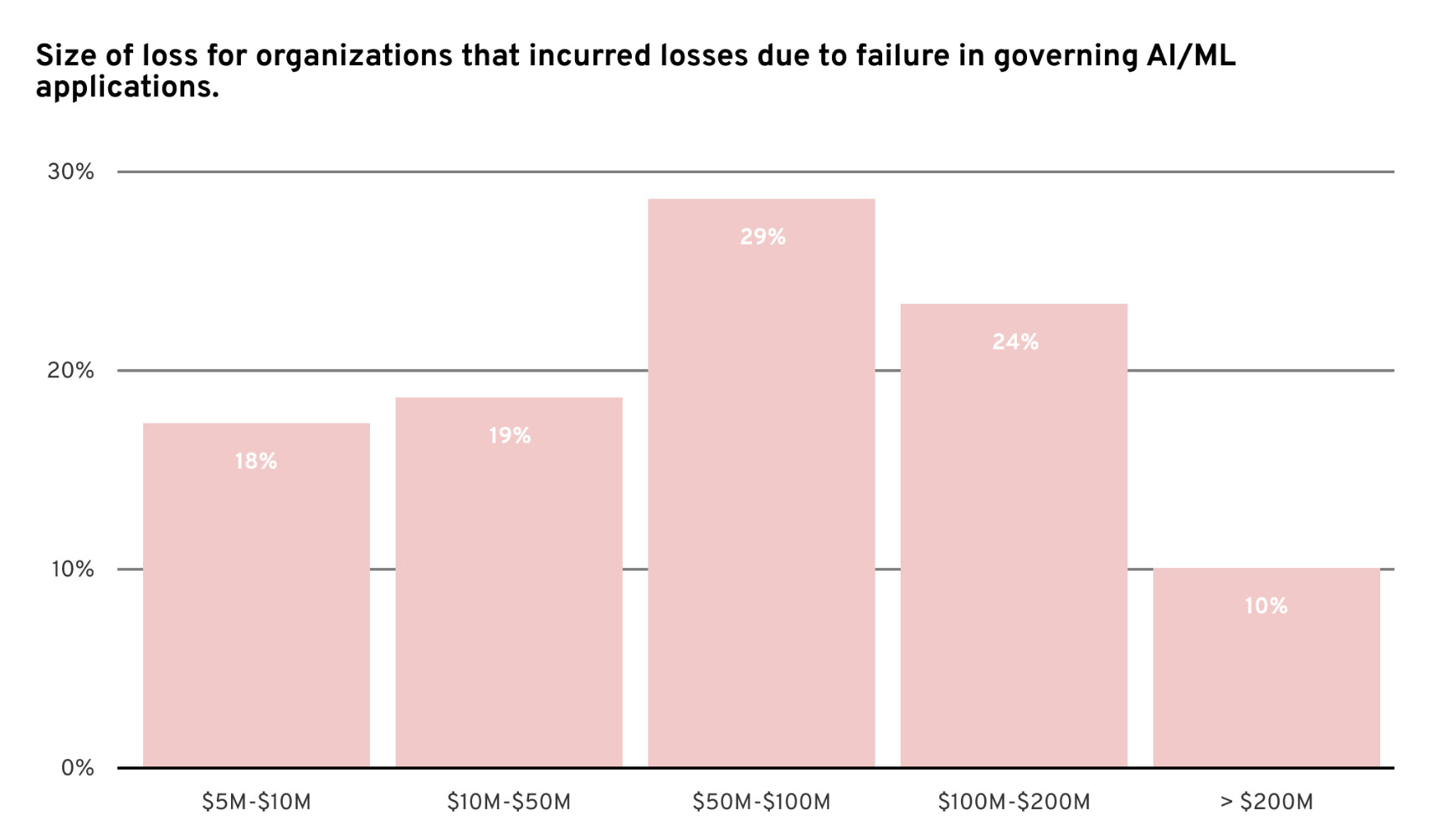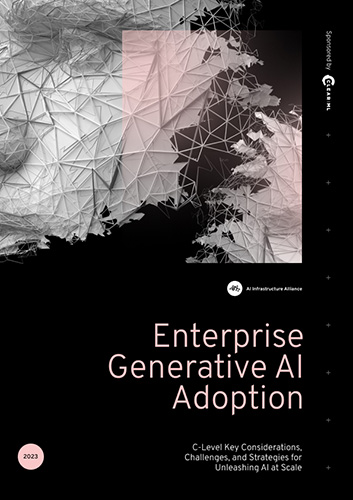Enterprise Generative AI Adoption
AIIA Report – August 2023
We surveyed over 1000 companies with more than 1B USD in revenue to see how fast they’re adopting generative AI and what their challenges are as they embrace these powerful new systems.
We focused on C-suite and team leaders with job titles like CIO, CTO, Head of AI, VP of Data or VP of Artificial Intelligence, across a range of verticals, everything from law firms, to manufacturing, to telecom, energy, food, healthcare and more.
Get it now. FREE.

Key Charts
Turns out, 67.2% saw it as a top priority to adopt LLMs and generative AI by the end of the year, with 49% rating it as 4 and 18.2% rating it as 5. That’s a very unexpected result. While LLMs have proven incredibly useful already for individuals and are starting to work their way into small business workflows, we didn’t expect them to rate as highly on enterprise radar, mostly because they are hard to control and don’t fit the pattern of traditional deterministic IT applications. But it seems enterprises are hungry to unlock the value of generative text models and don’t want to get left behind.
But while companies are eager to adopt LLMs and generative AI, it seems like there are a number of big blockers and challenges standing in their way. The biggest ones are customization and flexibility and the ability to preserve company knowledge and IP. Corporations have built up a storehouse of valuable assets and they want to protect them. They also want the ability to change the apps, models and frameworks as needed.
One of the most shocking revalations we found is that most companies saw big losses with existing AI deployments when they failed to govern them correctly. Worst of all, the size of those losses is staggering. 20% saw losses of 50M to 100M. 24% was losses of 100M to 200M and 10% saw losses of 200M or more from failures to govern the models and applications right. Many organizations we’ve spoken to admit privately that governance is incredibly challenging and that they lack the tools they need to really understand why models and applications are making decisions that are severely lacking.
Get it Now!
And start planning for the future, today.




